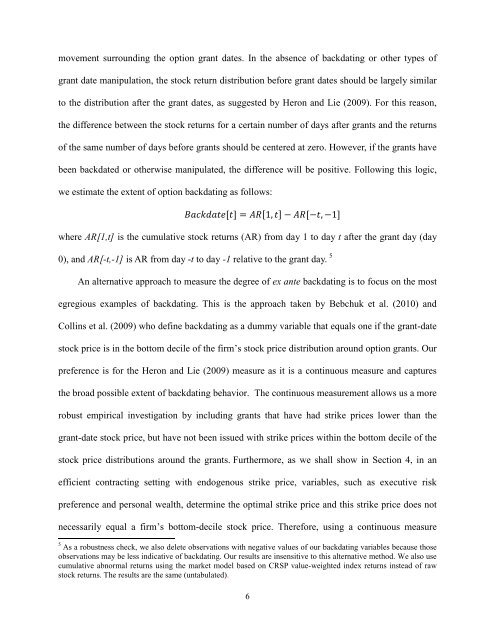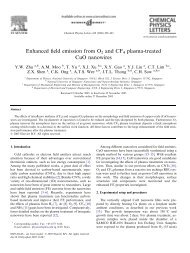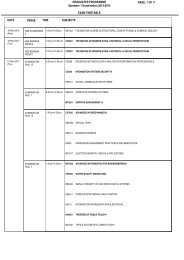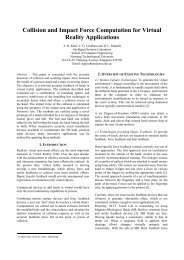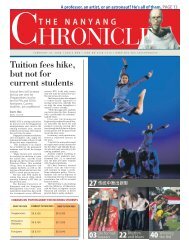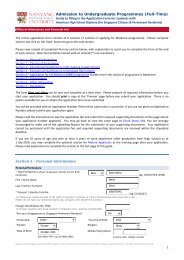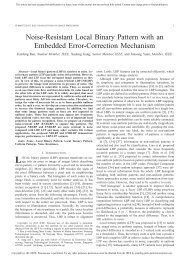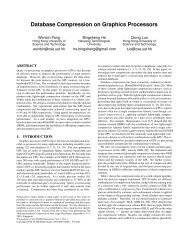Backdating Executive Option Grants - Nanyang Technological ...
Backdating Executive Option Grants - Nanyang Technological ...
Backdating Executive Option Grants - Nanyang Technological ...
You also want an ePaper? Increase the reach of your titles
YUMPU automatically turns print PDFs into web optimized ePapers that Google loves.
movement surrounding the option grant dates. In the absence of backdating or other types ofgrant date manipulation, the stock return distribution before grant dates should be largely similarto the distribution after the grant dates, as suggested by Heron and Lie (2009). For this reason,the difference between the stock returns for a certain number of days after grants and the returnsof the same number of days before grants should be centered at zero. However, if the grants havebeen backdated or otherwise manipulated, the difference will be positive. Following this logic,we estimate the extent of option backdating as follows:Backdate[t] = AR[1, t] − AR[−t, −1]where AR[1,t] is the cumulative stock returns (AR) from day 1 to day t after the grant day (day0), and AR[-t,-1] is AR from day -t to day -1 relative to the grant day. 5An alternative approach to measure the degree of ex ante backdating is to focus on the mostegregious examples of backdating. This is the approach taken by Bebchuk et al. (2010) andCollins et al. (2009) who define backdating as a dummy variable that equals one if the grant-datestock price is in the bottom decile of the firm’s stock price distribution around option grants. Ourpreference is for the Heron and Lie (2009) measure as it is a continuous measure and capturesthe broad possible extent of backdating behavior. The continuous measurement allows us a morerobust empirical investigation by including grants that have had strike prices lower than thegrant-date stock price, but have not been issued with strike prices within the bottom decile of thestock price distributions around the grants. Furthermore, as we shall show in Section 4, in anefficient contracting setting with endogenous strike price, variables, such as executive riskpreference and personal wealth, determine the optimal strike price and this strike price does notnecessarily equal a firm’s bottom-decile stock price. Therefore, using a continuous measure5 As a robustness check, we also delete observations with negative values of our backdating variables because thoseobservations may be less indicative of backdating. Our results are insensitive to this alternative method. We also usecumulative abnormal returns using the market model based on CRSP value-weighted index returns instead of rawstock returns. The results are the same (untabulated).6


